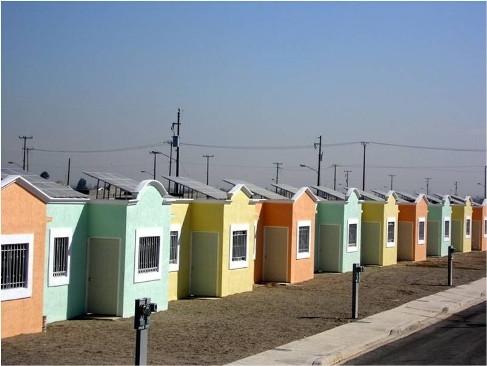
BAJA TIMES
Volume XXX, Number 94 December 1-15, 2008
HEALTH
Unique and Much Needed Services in Baja
New services to ensure continued enjoyment of retirement
Serena Senior Care opened its doors in spring of this year offering high quality assisted living, health management, and property care services in the Rosarito Beach area of Baja California, Mexico.
Don’t wait until it is to late! Many retirees from the United States, Canada and other parts of the world have been enjoying their retirement in Rosarito for years. Some have been here for over 20 years and as they age they have more difficulty dealing with normal daily activities. Entering in to these later stages in life may also require putting more attention to your health and being more proactive about taking care of yourself.
Some people choose to ignore these realities and don’t take any action, slowly losing the quality of life they used to enjoy. But others take action, and decide to keep enjoying life and not just surviving it. A good example is Peter Fowler, who will be 85 this winter. He moved to Rosarito four years ago and was enjoying life, and then he started to have some health problems and realized he needed help. Peter hired a caregiver, Gabriela, from Serena Senior Care and his quality of life increased. He is now enjoying his retirement again, “It was like a ton of bricks was lifted off my back,” says Peter. “Gabriela still comes by and simply makes life easy for me, in spite of my physical restrictions. We’re like family,” added Peter.
With the commitment to continually improve their services Serena Senior Care has announced new products that will undoubtedly become valuable resources to many. One of the services that many people have been asking for is an all inclusive assisted living facility, which is now a reality. Serena has now available a beautiful residence that is exceptionally equipped ready to host up to 15 residents. In this home, residents will have lodging, all meals, housekeeping, personal care by trained nurses and caregivers, supervision from a Geriatrician, social activities, physical therapy, and many other services.
This new service is a great value, with an affordable monthly fee that is about 50% the cost of comparable services in California, but with the distinctive warm hospitality of Mexico. Anyone interested in visiting the facility can RSVP for a tour directly at the Serena offices calling (661) 612 9090, or may go to their Open House on December 4th. “Nobody knows when the sky will fall, so knowing that Casa Harmony is available now, or for my final years, makes me feel safe and secure. I have peace of mind. Serena Senior Care has been good to me” conclude Peter.
Other times our loved ones need help and we become their caregivers, a task that takes its toll as time goes by. In these cases family caregivers need a break. For example, Virginia Anderson has lived in Rosarito for over 16 years and has been taking care of her husband after he become ill over ten years ago. Today Virginia has contracted a nurse from Serena Senior Care for one or two days per week giving her the opportunity to go out and do the things she enjoys, such as going to religious services and visiting with friends. “I am very pleased with the care my husband is getting when the caregiver comes to give me a day off. My husband likes the nurse very much and she seems to like him. Even though he can`t speak they seem to know what each other is saying” says Virginia.
New tools to make your life better: Since Serena Senior Care started they have demonstrated their commitment to becoming a true resource and a solutions provider for retirees in the region. They organized the first Health Fair focused on foreign residents and they launched the Serena Full Assistance Card that provides access to top medical services in the region and other services that give cardholders peace of mind such as road side assistance and emergency home repairs, all accessible through a 24- hour toll free number with bilingual operators. Recently they have added more services and discounts to the Full Assistance Card at some of the more prestigious restaurants such as Rincon San Roman at Real del Mar, That’s Amore, Cha Cha’s Café and others. Also they have increased the number of places where you can buy the card, such as the “Roma” pharmacies, International Mail Center, and Bajamart & Deli in Bajamar. The Card will soon be available in Ensenada, as well. You can find an updated list of places to buy and get discounts on their website, www.serenaseniorcare.com.
Other services now offered by Serena Senior Care are TLC and a Preventive Maintenance Policy. TLC stands for “Tender Loving CALLS”, a daily friendly call in English to check up on you and make sure everything is ok, or to make arrangements if you need something. This is a wonderful and simple service for those that live alone and want peace of mind that someone is looking out for them in case anything happens. The preventive maintenance program offers an inspection of your home to make sure that all the pluming, including gas, and electrical installations are working properly; to make sure all doors and windows work, and that there are no roof leaks. The inspections are done by trained technicians every 3 months. This is a perfect solution for those that don’t live permanently here or that are not the do-it-yourself type. If something needs repairs, Serena Senior Care can take care of it!
New services and new easy convenient ways to get them are one way that Serena Senior Care is proving its commitment to the Baja Retiree community in Rosarito and the North Baja coast. For more information contact Serena Senior Care at info@serenaseniorcare.com.
www.remax-baja.com










